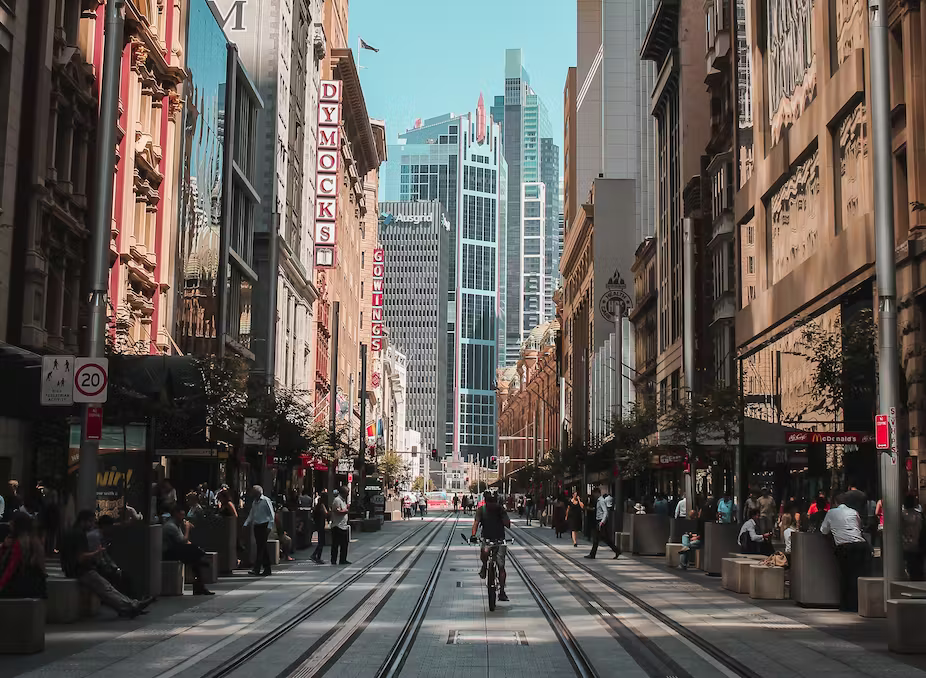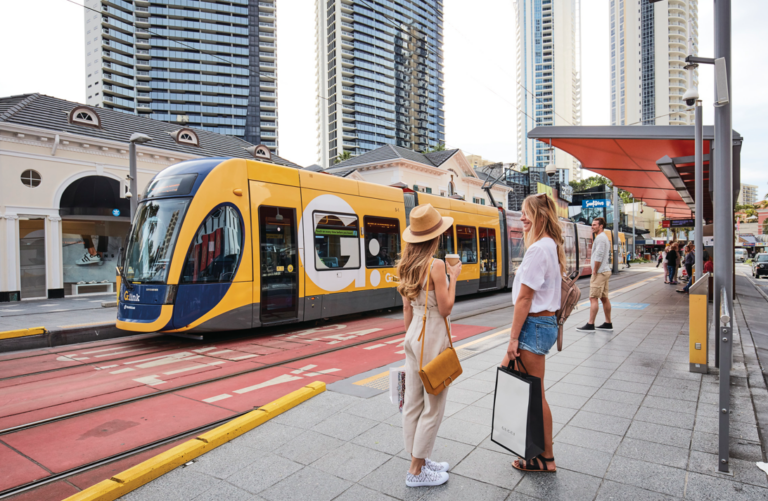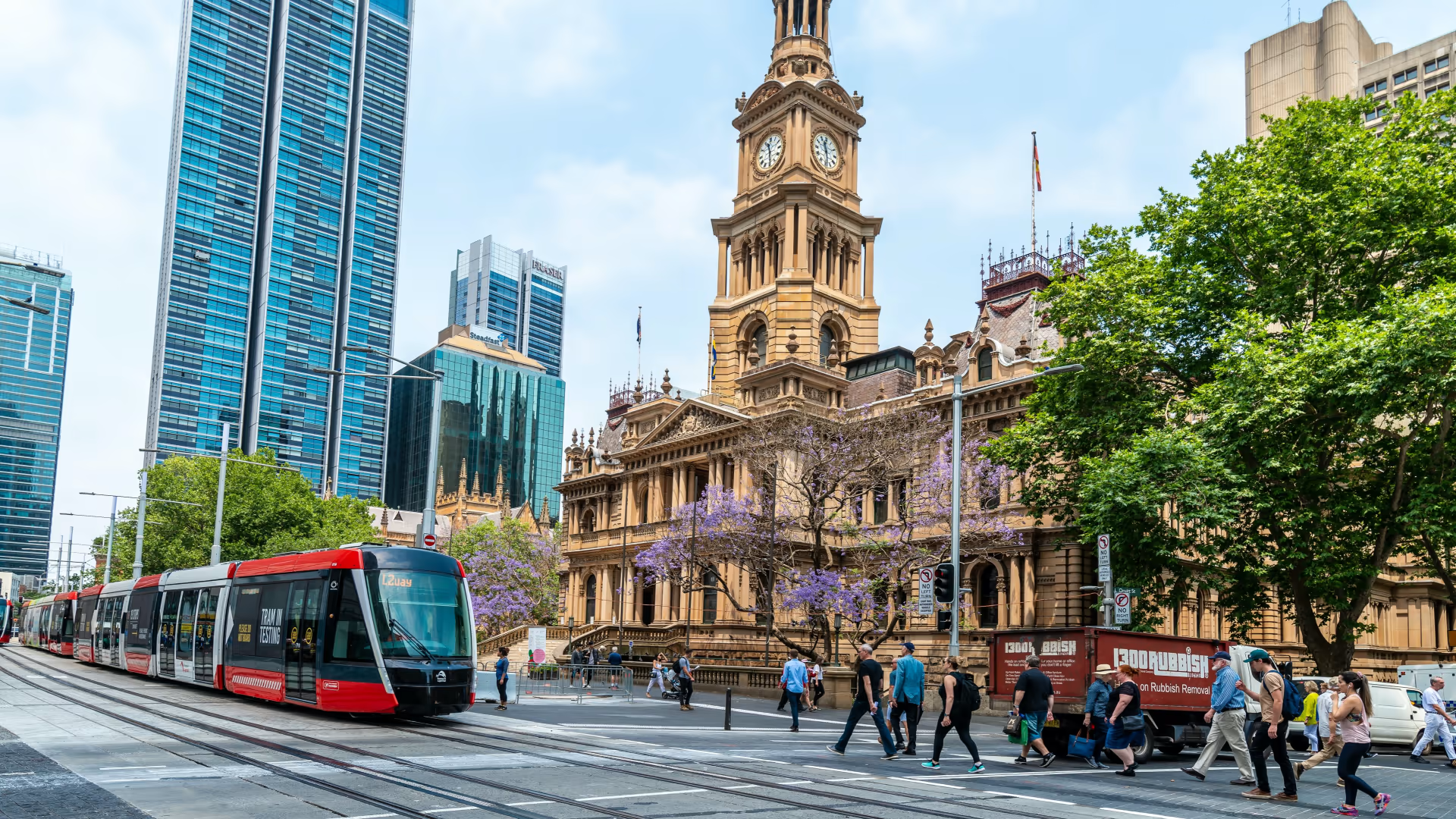Bring back the trams
A modern light rail plan for Brisbane.
Brisbane once had an extensive network of tram lines, serving most of the city. Since Labor Mayor Clem Jones got rid of the trams in 1969, our roads have filled up with cars, getting noisier, more congested and more dangerous.
Ripping up and paving over the tram tracks was a historic mistake.
Fifty-five years later, public transport has stagnated. Buses get stuck in traffic, and more people are forced to drive.
Unless we dramatically improve public transport in a hurry, Brisbane’s traffic will get even worse. As Brisbane’s population heads towards 2 million, we need real options to give residents the freedom to leave their cars at home.
The LNP and Labor have stuffed public transport in Brisbane. The current LNP Council has been promising the same bus project (Brisbane Metro) for three elections in a row.
Even after Cross River Rail and Brisbane Metro are finished, Brisbane’s public transport system will still be patchy, infrequent and unreliable in most of the city.
Alongside our previously announced policies to create more high-frequency bus routes and roll out free public transport, The Greens are setting out a bold vision to bring trams back to Brisbane.
Ambitious city-shaping projects take time, so our plan aims to roll out a network of modern light rail lines progressively, starting with a single high-priority corridor.
A Greens-led Brisbane City Council would:
- Set an ambitious vision to bring back the trams in Brisbane by launching a detailed public consultation and delivery study for the first modern light rail corridor.
- Start with the new L1 Line, running 24 km from Upper Mt Gravatt, to Salisbury, Moorooka, Annerley, Woolloongabba, Kangaroo Point, the Valley, Newstead and Hamilton, with trams coming every 5 minutes. The possible alignment is shown here.
- Double the number of high frequency buses, running in dedicated bus lanes.
- Roll out free public transport progressively.
A modern light rail plan for Brisbane
The Greens would start rolling out modern light rail lines progressively, starting with a new L1 Line, from Upper Mt Gravatt to Hamilton via the Valley and the Story Bridge.
We would fund a $10 million detailed public consultation and delivery study for the new L1 Line. Our objectives would include:
- A new 24km light rail line linking Upper Mt Gravatt to Hamilton Northshore via the Story Bridge. Possible alignment here, shown alongside the Greens’ Brissie Bus Boost plan.
- Large, high-capacity vehicles, carrying around 450 people each.
- A tram at least every 7.5 minutes from 5am - midnight
- Services every 5 minutes in peak periods
- Some services running 24 hours per day
- Tracked vehicles, running on steel rails
- In-ground “wire free” power supply, which is safe and low-impact, similar to Sydney’s CBD and South East light rail
- Generally avoiding road widening, except where necessary by reallocating space within the existing road corridors.

Stage 1 of Gold Coast light rail was built in four years so we would aim to build the L1 Line by 2031.
The delivery study would support bids for State or Federal funding, and would incorporate robust community consultation, including any alternative route options.
Why light rail?
As explained further below, in the short term, the Greens want to double high frequency buses with the Brissie Bus Boost while planning for the future with light rail.
As Brisbane grows, we have a choice: upgrade our public transport system to move thousands more people, or let traffic get worse forever, wasting money on more urban motorways.
The Greens want a city built for people, not for cars. We will start the process to roll out a modern light rail system which creates new high-capacity connections, linking up places where people want to go.
Light rail can carry more people, more quickly than buses, with larger vehicles moving more people per direction per hour than the Brisbane Metro or equivalent bus rapid transit modes.
The L1 Line would be reliable and predictable, running in its own lanes, in the centre of the road rather than getting stuck in traffic, making it more reliable than buses running without dedicated lanes.
Reliable services mean passengers can “turn up and go” with a tram every 5 minutes. Brisbane commuters know what it’s like to worry their bus will just “disappear”.
For visitors and tourists, light rail systems are easier to navigate because you always know where they’re going, and where your stop is.
Modern light rail is smooth and quiet, meaning passengers can easily use a laptop, read a book or keep up a conversation while riding. The ride is smoother because light rail vehicles don’t need to swerve in and out of bus stops, or battle stop-start traffic.
Light rail vehicles are roomy enough to comfortably fit a wheelchair and for passengers to bring prams, bikes, e-scooters or surfboards.
Perhaps most importantly, light rail can create streets where people want to spend time. It makes our cities quieter, and can revitalise suburban high streets degraded by noisy, dangerous car traffic.
High quality, well connected public transport can support new medium-density, walkable precincts as well as fast-growing high-density suburbs like Woolloongabba and Hamilton.

Gold Coast light rail has been wildly popular, creating a 31% increase in total public transport ridership on the Gold Coast after it opened in 2014. It was the first public transport mode in Queensland to return to pre-COVID ridership in 2022.

The L1 Line: Mt Gravatt to Hamilton
The L1 line would create a new connection from Garden City at Upper Mt Gravatt to Hamilton, linking key health, educational, employment and residential hubs.
It would start at the busway interchange at Garden City / Upper Mt Gravatt and run through, Nathan, Salisbury, Moorooka, Annerley, Woolloongabba, Kangaroo Point, the Valley, Newstead and Hamilton. It would travel on Kessels Rd, Orange Grove Rd, Ipswich Rd, Main St and over the Story Bridge to Ann St. From the Valley it would follow Wickham St, Breakfast Creek Rd, Kingsford Smith Drive and MacArthur Ave in Hamilton.
The possible alignment for the L1 Line is shown here, alongside the Greens’ Brissie Bus Boost plan.

Below is a detailed description of the key interchanges and destinations on the route:
- Start: Upper Mt Gravatt busway, shopping centre and residential precinct.
- QSAC Stadium (QEII), Griffith Nathan Campus & QEII Hospital
- Evans Rd industrial precinct, Salisbury. An alternative alignment for this corridor would be Lilian Ave and Fairlie Tce.
- Moorooka high street, Beaudesert Rd.
- Annerley high street, Ipswich Rd.
- PA Hospital and Buranda Village.
- Woolloongabba Cross River Rail station, Metro station, the Gabba & high density residential.
- Kangaroo Point residential and recreation including Dockside and the cliffs precinct (with new elevator connections to stops on the Story Bridge)
- Fortitude Valley train station, entertainment, commercial and residential areas.
- Newstead, Gasworks and Skyring Tce.
- Northshore Hamilton high density residential precinct, Portside and Eat Street Markets.
The L1 will serve the many thousands of new residents in the State government’s new or expanded Priority Development Areas at Woolloongabba and Northshore Hamilton.
The thousands of residents in high rise apartments in Kangaroo Point currently have no high frequency public transport at all, and no quick way to reach the Valley.
Northshore Hamilton still has no high frequency bus services, and the State government has no plans to create one, let alone a light or heavy rail extension to meet the needs of residents there.

The L1 Line would make public transport a real option for thousands of people. Based on Gold Coast Light Rail, it would travel:
- From Woolloongabba to Eat St Northshore, Hamilton in 21 minutes, compared to 1 hour and two buses on public transport now.
- From the Valley to Moorooka in 20 minutes, compared to 40 minutes and two buses currently.
- From Dockside Kangaroo Point to Griffith Nathan Campus in 31 minutes, compared to 1 hour and two buses on public transport now.
Buses first, light rail next
Light rail will take time to plan and build, but the Greens want to improve public transport right away.
We would immediately implement our Brissie Bus Boost to double the number of high frequency buses with 15 new services connecting suburbs directly without travelling to the city. Our plan includes 13 bus priority corridors with T3 lanes or dedicated bus lanes to make services more reliable and faster.
The L1 Line follows much the same route as the B2, one of the Greens’ proposed high frequency bus routes (Annerley - Woolloongabba - Valley - Hamilton).
When the L1 Line is built, it would replace the B2 bus route, and any future light rail lines would similarly build on high frequency routes.
Australian cities are bringing back their trams and building new ones
Major cities across Australia are rolling out modern light rail networks, including the Gold Coast, Sydney, Parramatta, Newcastle, Adelaide, Canberra.
Melbourne never lost its tram system, and it carries 160 million passengers every year.

Planning the next city-shaping project
The Greens are setting out a vision to dramatically improve public transport.
The State government has not planned any new significant public transport projects for Brisbane once Cross River Rail is complete in 2026.
The State government should urgently identify and plan for the next heavy rail expansion in Brisbane, as the Greens have been urging for nearly a decade.
The LNP Council has neglected public transport, promising the same long-delayed bus rapid transit project (called Brisbane Metro) for three elections since 2016.
The Greens on Council will plan for the next city-shaping project.
We believe every major road corridor should have high-capacity, high frequency public transport, either buses running in T3 or dedicated bus lanes, light rail or some other mode. Some other corridors which could be considered for light rail upgrades include:
- The route 60 Blue CityGlider from West End to Teneriffe
- Routes on Coronation Drive to UQ or Indooroopilly/Kenmore
- Routes on Old Cleveland Rd
- Routes on Logan Rd
- Routes on Kelvin Grove Rd
- Routes on South Pine Rd / Old Northern Rd
Funding, feasibility and costs
The Greens would use our $10 million detailed delivery study to start the process of bringing back the trams.
Light rail is always delivered in partnership with other levels of government, but local governments have an important leadership role. For example, the Gold Coast City Council jointly led the Gold Coast Light Rail project and contributed $120 million towards the $1.2 billion cost of Stage 1.
Unlike the Gold Coast, there will be limited need to build new bridges or heavy infrastructure, helping to control project costs.
Brisbane’s streets once accommodated an extensive network of trams, covering 109km at their greatest extent in the 1950s.
The proposed alignment for the L1 Line will generally utilise existing road space, since most road corridors are five to six lanes wide, with Ipswich Rd reaching eight lanes in some places.
Avoiding expensive road widenings and property resumptions where possible will keep project costs under control and minimise disruption and delays.